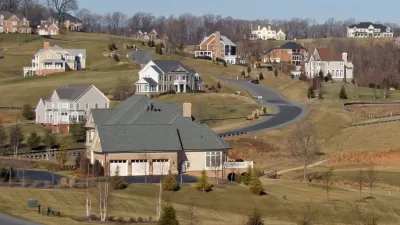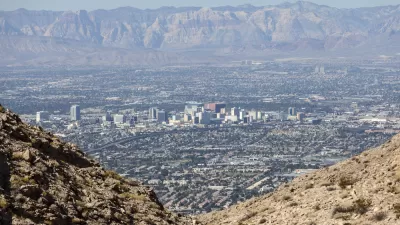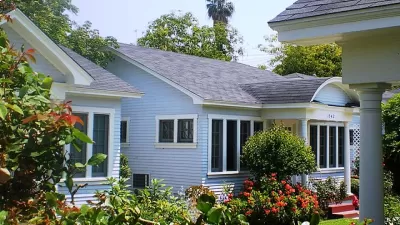Increased awareness of sprawl’s negative effects has not led to a drop-off in its construction. Developers say they only build what the market demands.

Even though we know sprawl is bad, developers are still building it in a frenzy of post-recession construction. Alana Semuels examines why large-scale suburbia is still the default residential mode.
There is a chicken-or-egg question at play here. Does buyer demand for sprawl truly drive its construction? According to this line of thinking, "studies may show that the younger generation wants small, compact, transit-accessible housing […]. But once they decide to have kids and dogs, they’ll want the traditional suburban home with more space."
Alternatively, fewer people might settle in walkable communities simply because the construction industry doesn’t provide them. The article provides examples from Las Vegas and Atlanta supporting both sides.
The public attitude toward sprawl in the 21st century "points to a growing divide about how different people think Americans want to live in the future." Regardless, there are still tangible problems associated with sprawl, including strain on taxpayers to cover the infrastructure bills for far-flung subdivisions.
FULL STORY: Why Are Developers Still Building Sprawl?

Planetizen Federal Action Tracker
A weekly monitor of how Trump’s orders and actions are impacting planners and planning in America.

Restaurant Patios Were a Pandemic Win — Why Were They so Hard to Keep?
Social distancing requirements and changes in travel patterns prompted cities to pilot new uses for street and sidewalk space. Then it got complicated.

Map: Where Senate Republicans Want to Sell Your Public Lands
For public land advocates, the Senate Republicans’ proposal to sell millions of acres of public land in the West is “the biggest fight of their careers.”

Maui's Vacation Rental Debate Turns Ugly
Verbal attacks, misinformation campaigns and fistfights plague a high-stakes debate to convert thousands of vacation rentals into long-term housing.

San Francisco Suspends Traffic Calming Amidst Record Deaths
Citing “a challenging fiscal landscape,” the city will cease the program on the heels of 42 traffic deaths, including 24 pedestrians.

California Homeless Arrests, Citations Spike After Ruling
An investigation reveals that anti-homeless actions increased up to 500% after Grants Pass v. Johnson — even in cities claiming no policy change.
Urban Design for Planners 1: Software Tools
This six-course series explores essential urban design concepts using open source software and equips planners with the tools they need to participate fully in the urban design process.
Planning for Universal Design
Learn the tools for implementing Universal Design in planning regulations.
Heyer Gruel & Associates PA
JM Goldson LLC
Custer County Colorado
City of Camden Redevelopment Agency
City of Astoria
Transportation Research & Education Center (TREC) at Portland State University
Camden Redevelopment Agency
City of Claremont
Municipality of Princeton (NJ)





























